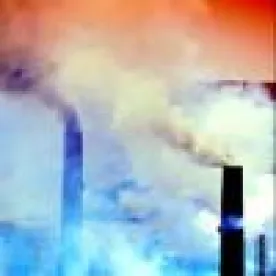In re: La Paloma Energy Center was recently analyzed by Jane Montgomery and David Loring at a U.S. Supreme Court energy and environmental case update hosted by the Energy Council, Illinois Chamber of Commerce. What follows is a written transcript of the In re: La Paloma Energy Center 2014 WL 1066556 (EPA Env. Appeals Bd., Mar. 14, 2014) analysis presented April 28, 2014.
Many have been closely following the myriad of recent GHG regulations affecting stationary sources. EPA’s GHG Tailoring Rule, which came into effect in the beginning of 2011, has forced industry and permitting authorities to determine ways to reduce GHG emissions when constructing or modifying major sources of air pollution. Thus we thought it worthwhile to highlight a recent administrative decision, – albeit one that did not go the Supreme Court – which suggests EPA’s willingness to afford sources flexibility in achieving reductions in GHG emissions.
In re La Paloma is a 2014 E.A.B. decision involved a permit appeal by Sierra Club; appealing issuance of an air permit to construct a 700 MW natural gas-fired power plant in Texas. Without getting into too many of the legal details of the CAA, because this project involved the construction of a new major source of air pollution, La Paloma was required to obtain a so-called Prevention of Significant Deterioration or PSD construction permit. Part of the construction permitting process involves identifying “best available control technology” or BACT to be implemented at the facility to minimize the emission of regulated pollutants, like GHGs. In short, over the years through guidance and practice EPA essentially requires that the permitting authority and source identify various control technology options by comparing and analyzing the feasibility and economic/energy/environmental impacts of the. The “most effective” technology is then selected and emission limits contained in the permit are based on the capability of that technology.
La Paloma’s BACT determination concluded with EPA approving not 1, but rather 3 alternate control technologies – in this case, 3 different types of combustion turbines – each with different efficiencies and different GHG emission limits. EPA afforded La Paloma the flexibility to then later choose which ever of the 3 turbines it thought worked best for its facility. The Sierra Club argued that by approving alternate GHG emission limits, EPA had wrongfully transferred authority to La Paloma to determine its own GHG emission limits. The Board disagreed. The Board found that the rules only required that a specific type or category of control technology be selected as BACT – in other words, it’s permissible for the permitting authority to determine the type of control technology required to control GHG emissions, but the facility can choose the specific model or form of that type of technology even if one model is less effective at reducing GHG emissions.
So why is this important? On the one hand sources have never been required to install the most stringent control technologies – there is always a balancing of factors like cost and feasibility. On the other hand, GHG emissions are not like emissions of SO2 or NOx where a source can install a specific, known pollution control device. Energy efficiency in most cases is currently the only mechanism for large sources like electric generating utilities to control GHG emissions. The Board’s affirmation of EPA’s grant of flexibility to La Paloma may be a signal to sources that EPA does not want GHG rules to prevent development of new, arguably cleaner, forms of energy like natural gas plants. At the same time we see this decision as a signal to the regulated community that Sierra Club and other environmental NGOs are scrutinizing GHG BACT determinations, but that sources can defeat the unnecessary challenges by following the best possible permitting practices. Understand your alternatives and posit your best case evidence in your permit applications. A stronger application makes for better decisions that withstand outside challenges. In this case, proposing alternative technologies allowed the applicant to negotiate with vendors while keeping the project on schedule. As we all know, when a vendor has “won” based on being the “only” technology, the price for that technology may well go up. So a strong application can defeat both outside challenges and business cost issues.
Click below for the transcripts of Montgomery and Loring's presentation on:
Rocky Mountain Farmers v. Corey and California’s Low-Carbon Fuel Standard
Mingo Logan Coal Co. v. EPA Analysis of the Expansion of the EPA’s Authority




 />i
/>i

